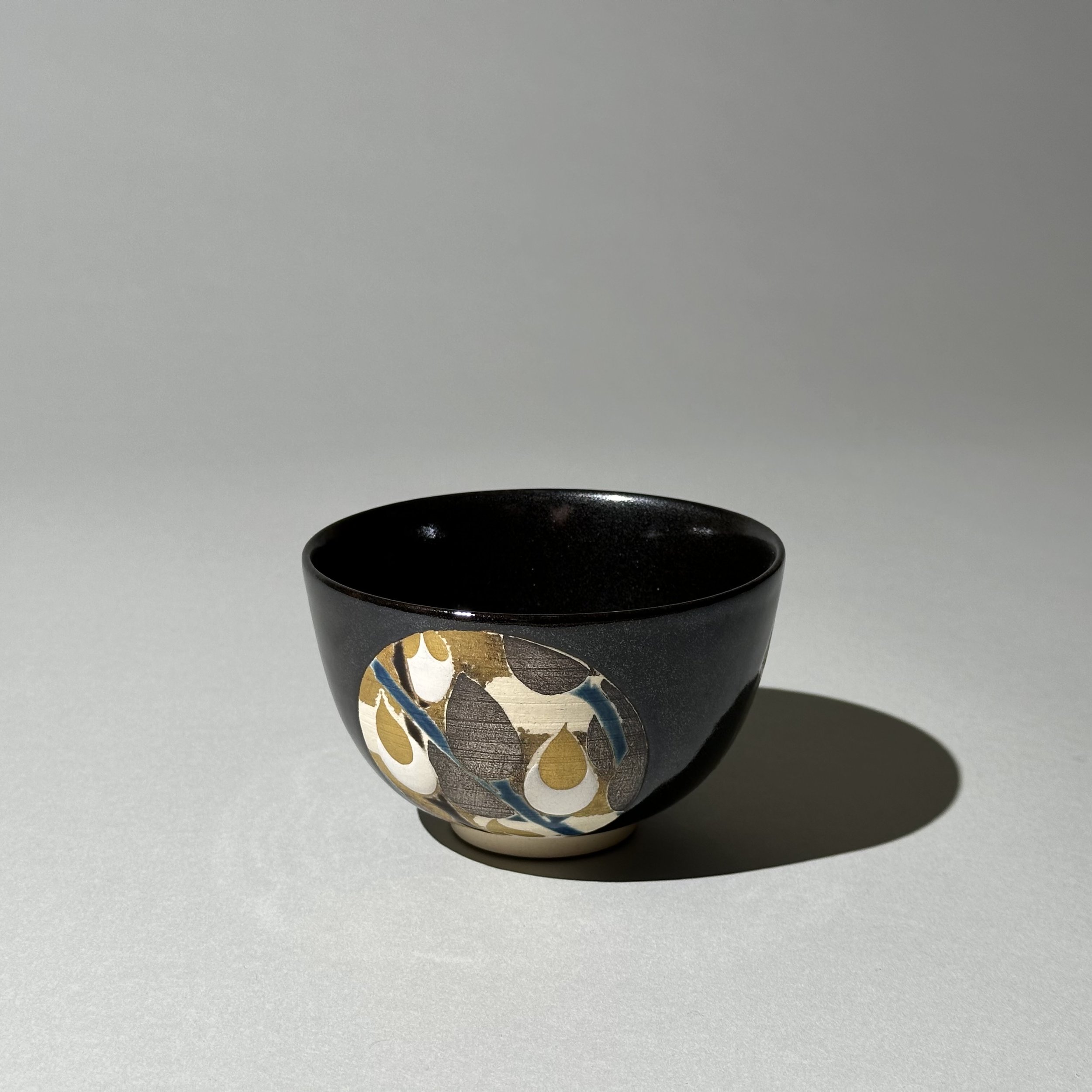 Image 1 of 11
Image 1 of 11

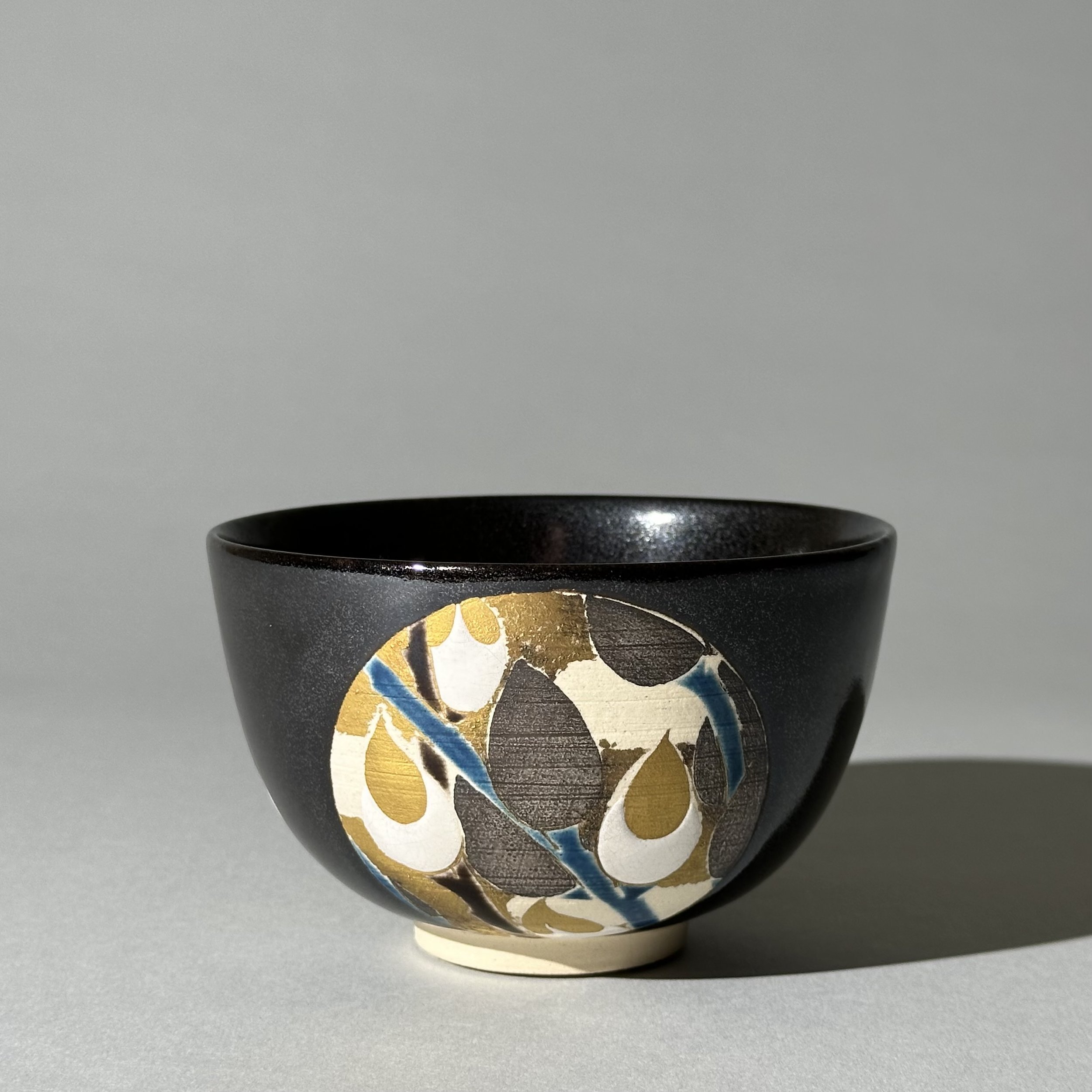 Image 2 of 11
Image 2 of 11

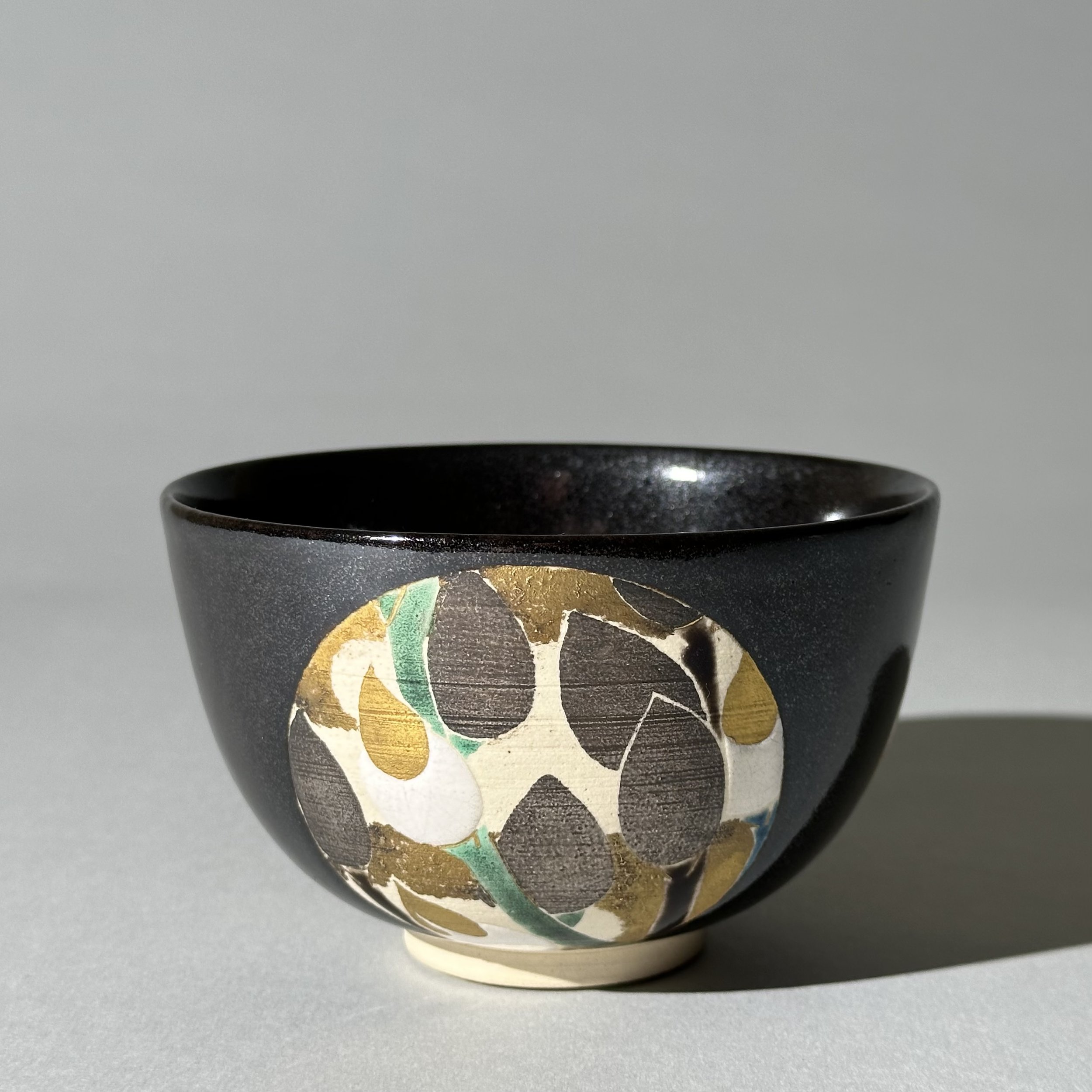 Image 3 of 11
Image 3 of 11

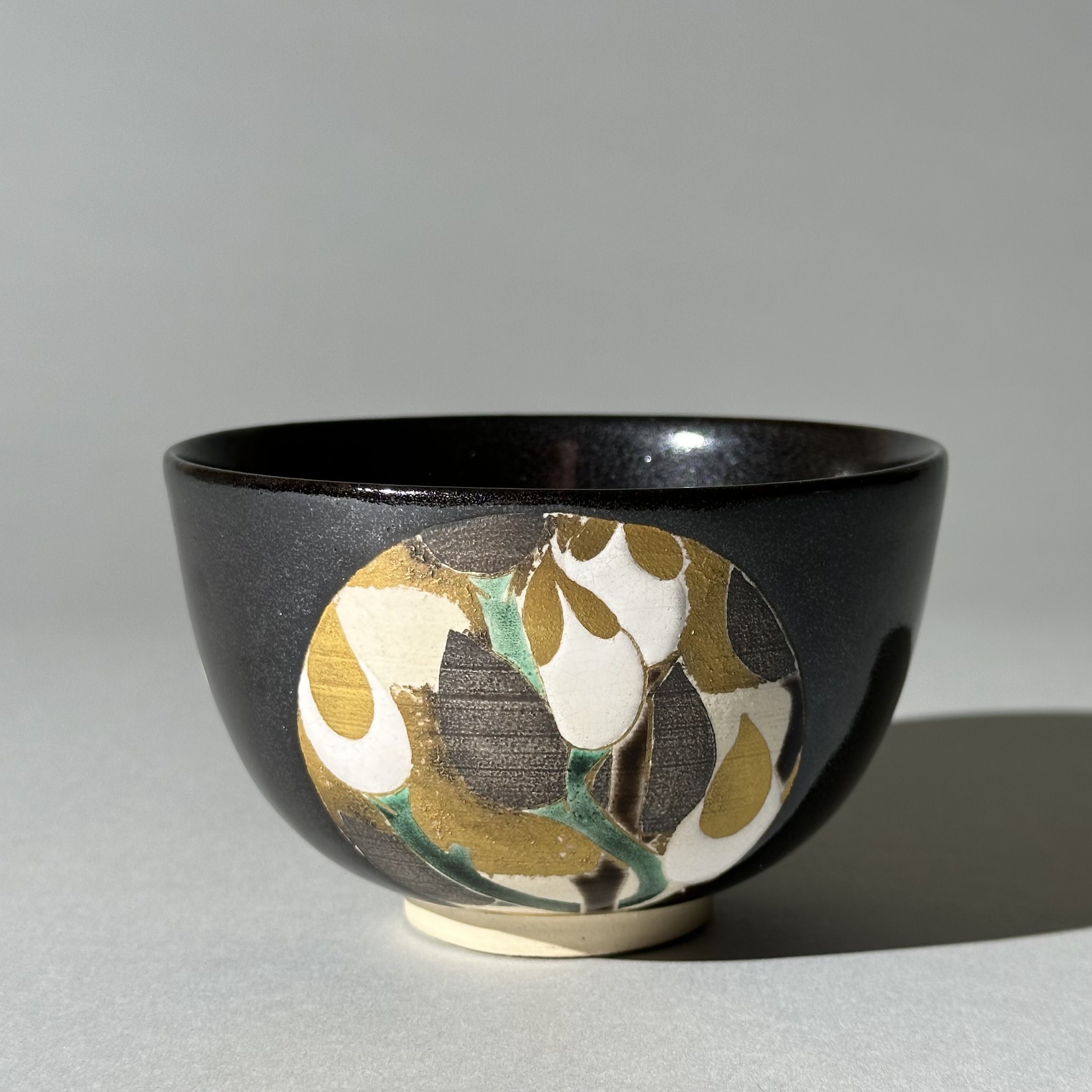 Image 4 of 11
Image 4 of 11

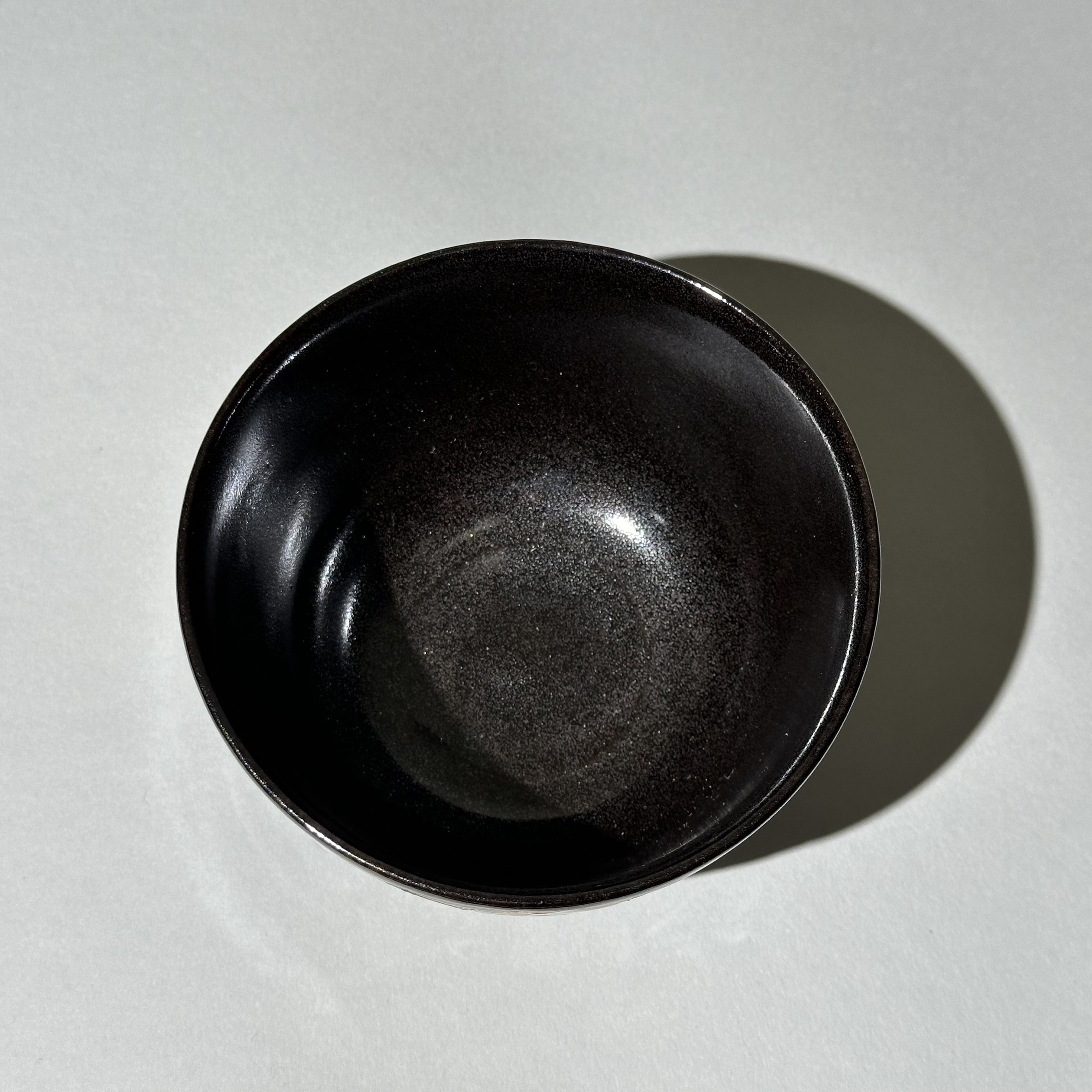 Image 5 of 11
Image 5 of 11

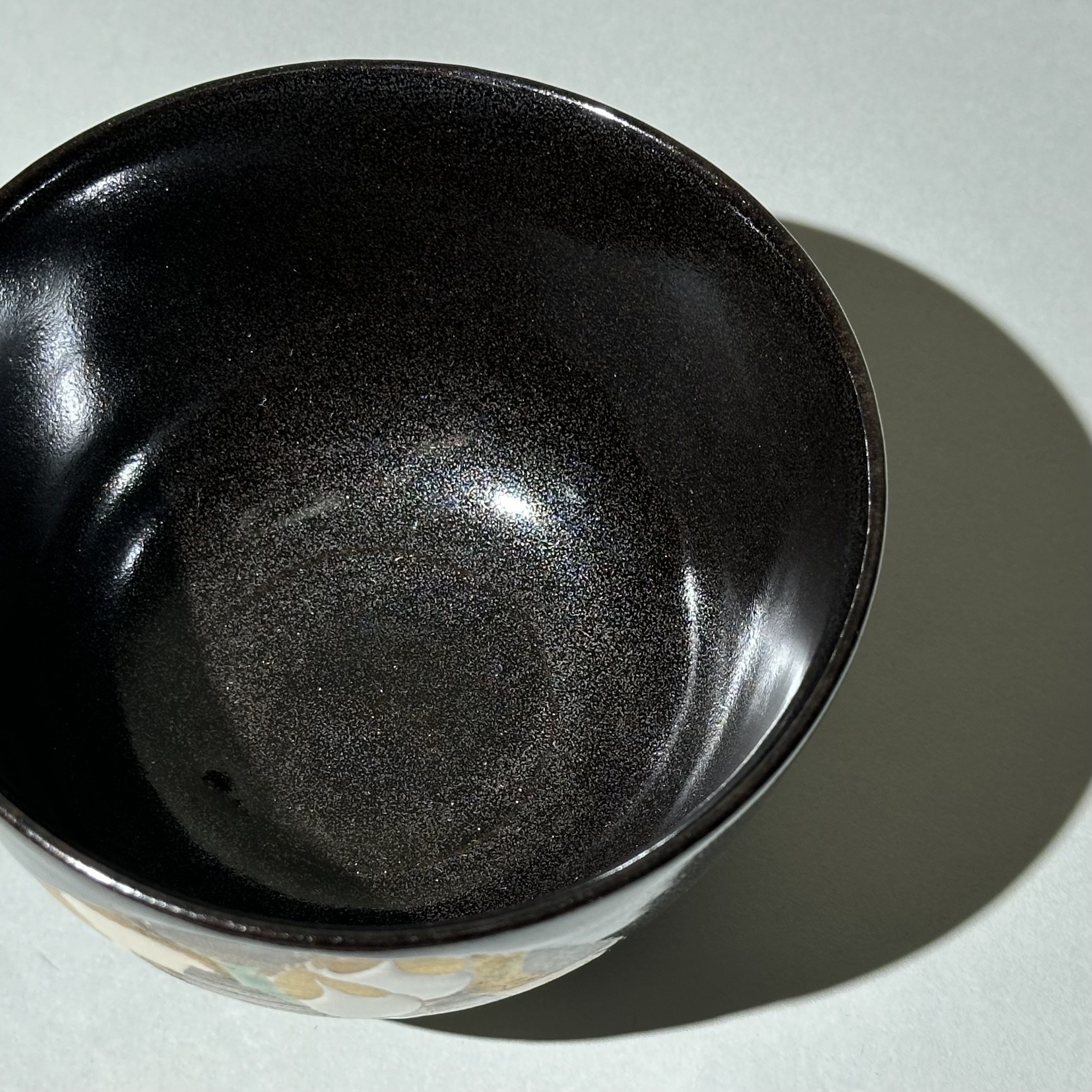 Image 6 of 11
Image 6 of 11

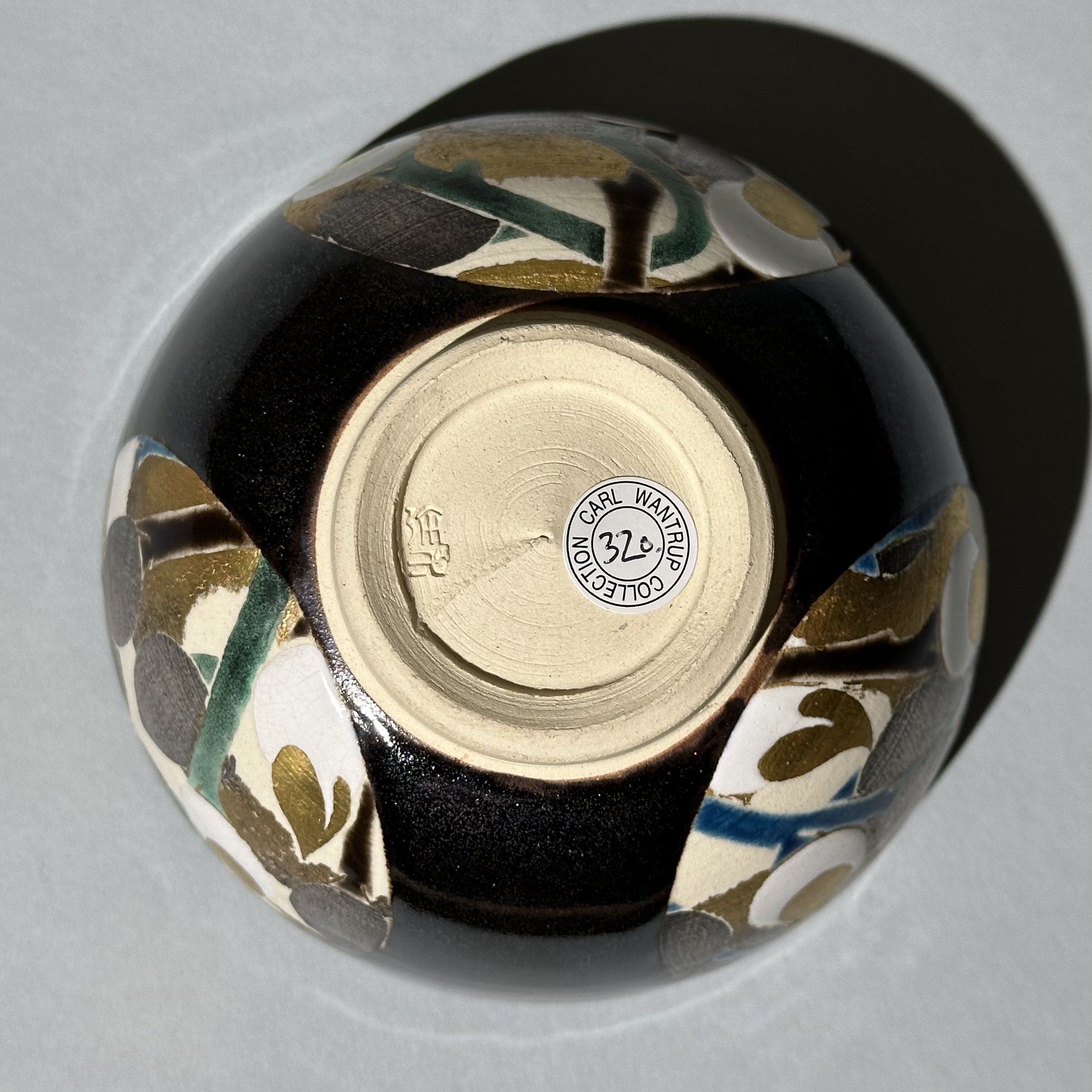 Image 7 of 11
Image 7 of 11

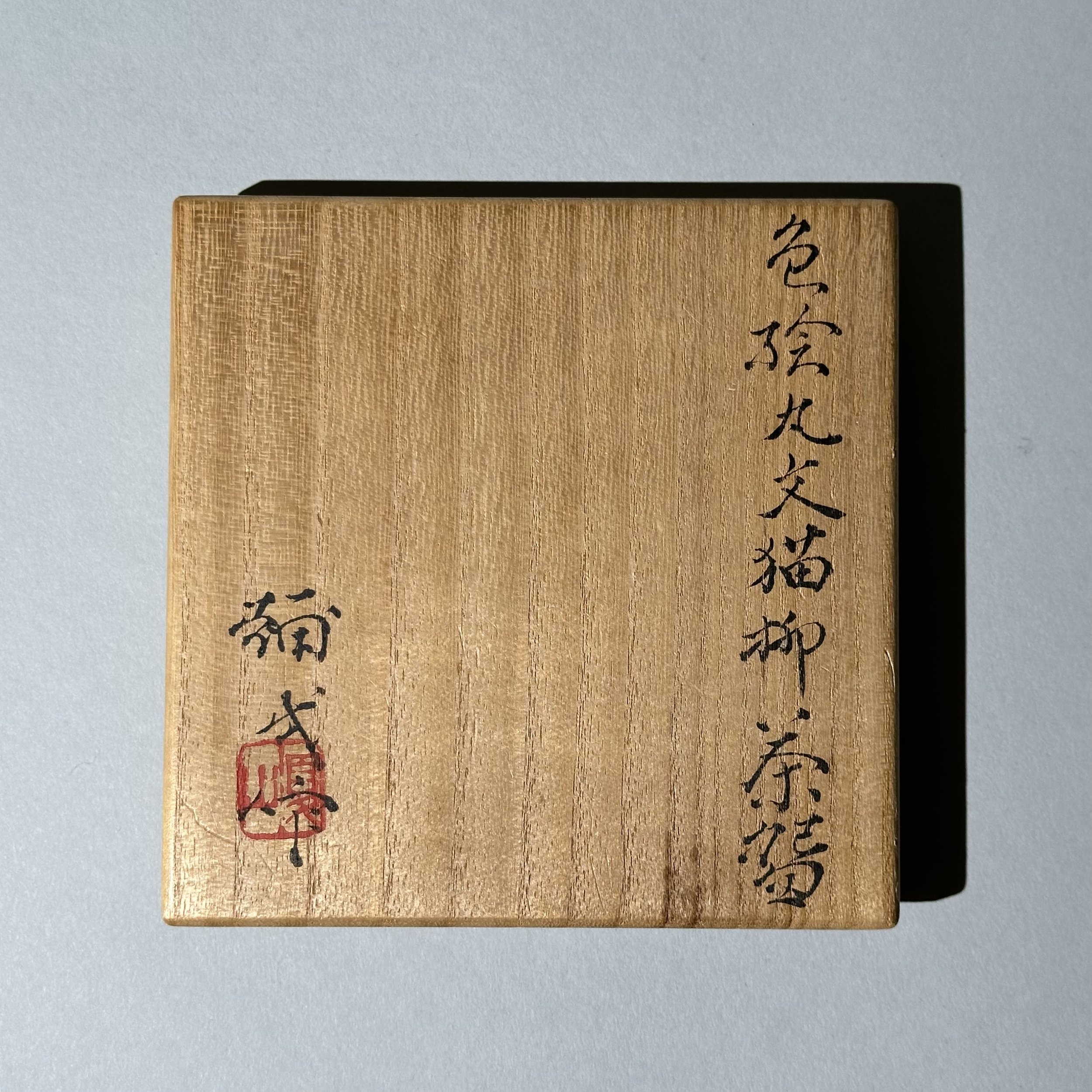 Image 8 of 11
Image 8 of 11

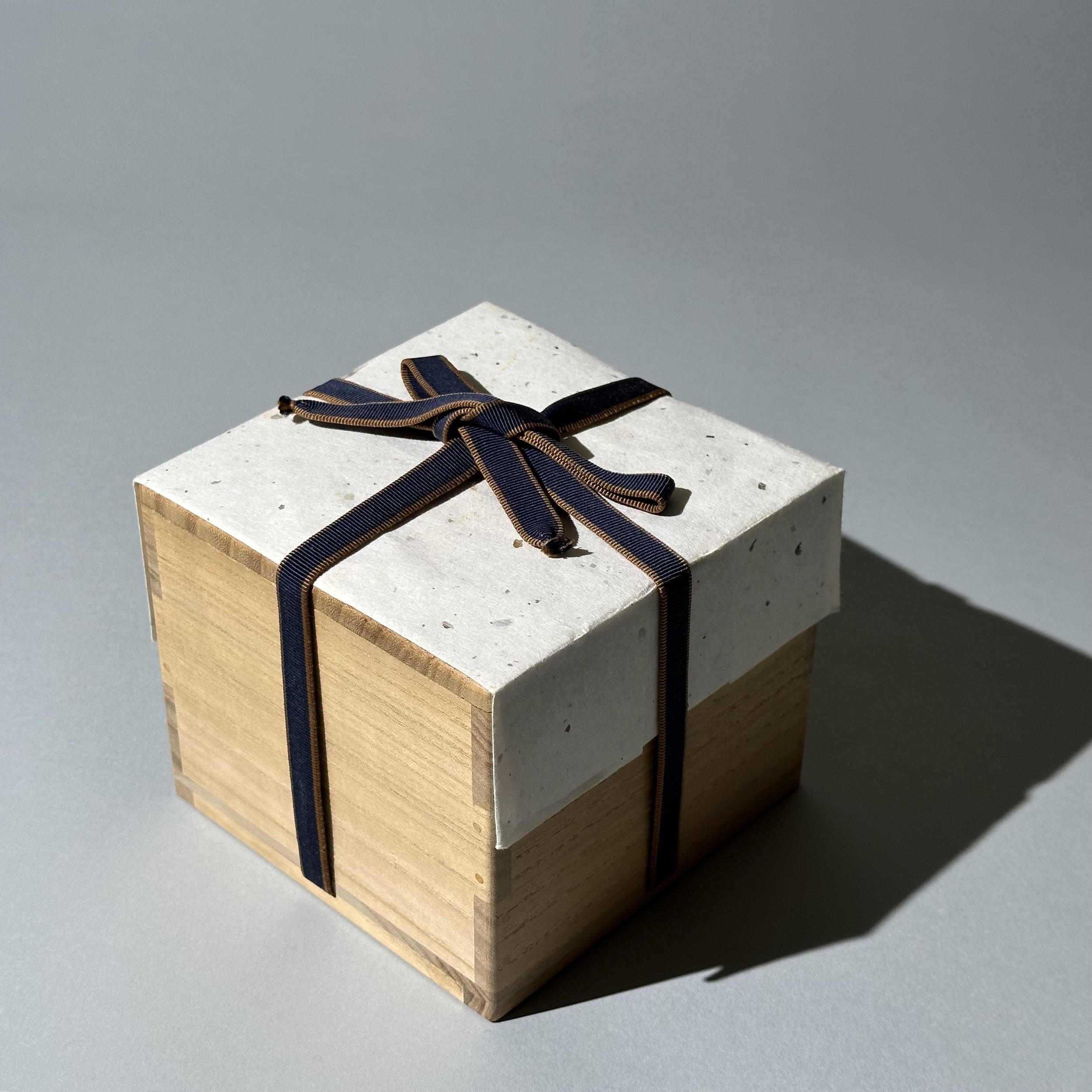 Image 9 of 11
Image 9 of 11

 Image 10 of 11
Image 10 of 11

 Image 11 of 11
Image 11 of 11












Tea bowl (chawan) by Kusube Yaichi (1897-1984)
Kyoto, Japan
Showa Period (1926-1989)
Decorated with three roundels against a metallic oil-spot back glaze, the roundels containing abstracted magnolia blossoms in coloured enamels, gilding and silvering. 7.25cm high, 11.75cm diameter. Together with a white silk shifuku, an inner tomobako (original signed wooden box) and an outer brown-lacquered box.
Catalogue 320.
Kusube Yaichi (1897-1984) attended the Kyoto Municipal Ceramics Institute upon completion of his schooling. Unlike many Kyoto ceramicists who came from a background in ceramics, Kusube was an early product of what was to become the norm for training ceramicists in the 20th century. He tended to be independent of larger organisations although he was involved in forming Sekido (which championed ceramics as high art rather than merely craft) in 1920 and later Akatsuchi ceramic associations. As with so many of his generation his early work reflected Chinese and Korean ceramics but, through his own experimentation, he progressive widened his repertoire with original forms and glazes of his own. This culminated with his Saien inlay technique that produced arguably some of the most beautiful modernist porcelains of the 20th century. He received the order of Cultural Merit in 1978 and passed away in Kyoto at the age of 87. His works are held in the Tokyo National Museum of Modern Art, Boston Museum of Fine Arts, and the Freer and Sackler Galleries in Washington.
Kyoto, Japan
Showa Period (1926-1989)
Decorated with three roundels against a metallic oil-spot back glaze, the roundels containing abstracted magnolia blossoms in coloured enamels, gilding and silvering. 7.25cm high, 11.75cm diameter. Together with a white silk shifuku, an inner tomobako (original signed wooden box) and an outer brown-lacquered box.
Catalogue 320.
Kusube Yaichi (1897-1984) attended the Kyoto Municipal Ceramics Institute upon completion of his schooling. Unlike many Kyoto ceramicists who came from a background in ceramics, Kusube was an early product of what was to become the norm for training ceramicists in the 20th century. He tended to be independent of larger organisations although he was involved in forming Sekido (which championed ceramics as high art rather than merely craft) in 1920 and later Akatsuchi ceramic associations. As with so many of his generation his early work reflected Chinese and Korean ceramics but, through his own experimentation, he progressive widened his repertoire with original forms and glazes of his own. This culminated with his Saien inlay technique that produced arguably some of the most beautiful modernist porcelains of the 20th century. He received the order of Cultural Merit in 1978 and passed away in Kyoto at the age of 87. His works are held in the Tokyo National Museum of Modern Art, Boston Museum of Fine Arts, and the Freer and Sackler Galleries in Washington.
Kyoto, Japan
Showa Period (1926-1989)
Decorated with three roundels against a metallic oil-spot back glaze, the roundels containing abstracted magnolia blossoms in coloured enamels, gilding and silvering. 7.25cm high, 11.75cm diameter. Together with a white silk shifuku, an inner tomobako (original signed wooden box) and an outer brown-lacquered box.
Catalogue 320.
Kusube Yaichi (1897-1984) attended the Kyoto Municipal Ceramics Institute upon completion of his schooling. Unlike many Kyoto ceramicists who came from a background in ceramics, Kusube was an early product of what was to become the norm for training ceramicists in the 20th century. He tended to be independent of larger organisations although he was involved in forming Sekido (which championed ceramics as high art rather than merely craft) in 1920 and later Akatsuchi ceramic associations. As with so many of his generation his early work reflected Chinese and Korean ceramics but, through his own experimentation, he progressive widened his repertoire with original forms and glazes of his own. This culminated with his Saien inlay technique that produced arguably some of the most beautiful modernist porcelains of the 20th century. He received the order of Cultural Merit in 1978 and passed away in Kyoto at the age of 87. His works are held in the Tokyo National Museum of Modern Art, Boston Museum of Fine Arts, and the Freer and Sackler Galleries in Washington.
